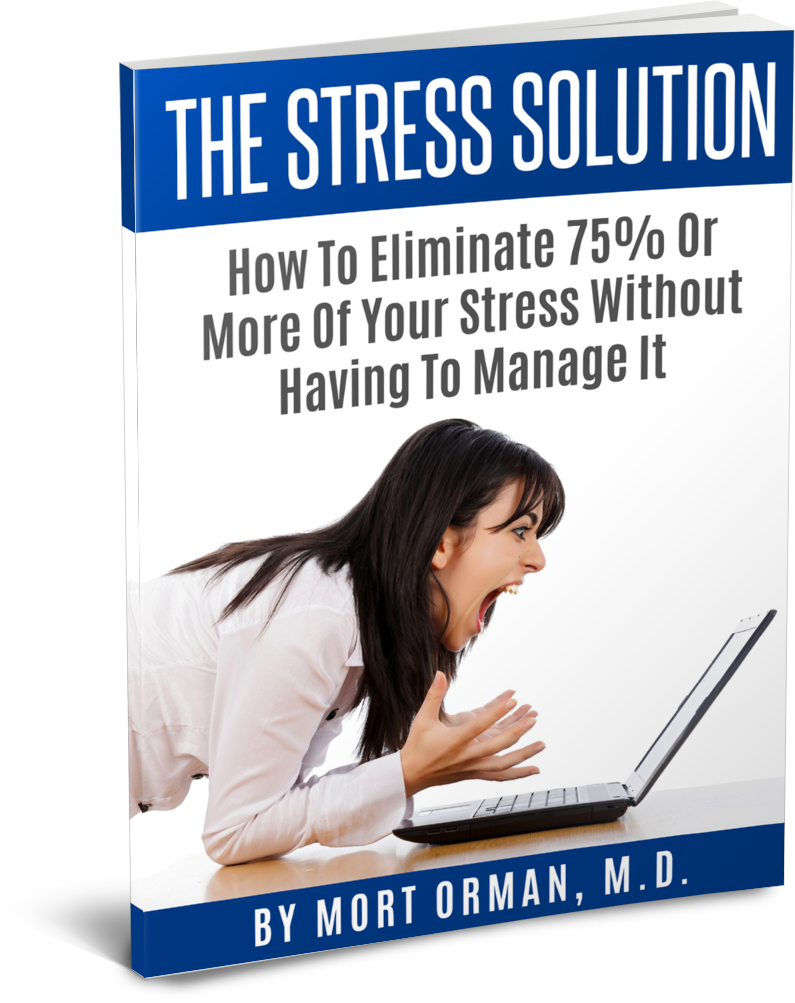Dr. Mort Orman here, and this is the second of a 6-part series of how to better understand the true causes of your stress.
If you missed the first installment, just click here to read it.
What really causes you and other human beings to feel angry?
What causes you and other people to feel anxious or sad?
And what really causes some of our relationships to go sour and eventually come to a bitter end? Is it really just the faults and behaviors of the other person? Or could we somehow have unwittingly played a role?
Common Questions We All Struggle With
These are just a few of the common questions most human beings struggle with.
We desperately want to understand what causes us to feel the way we do.
We also want to understand what caused our past relationships to fail, so we can identify these key causes and correct them going forward.
Unfortunately, as I explained in my first article in this series, our society has trained us to focus almost exclusively on external causes.
We have very little insight, clarity or precision when it comes to identifying internal causes, which leaves us at a great disadvantage when it comes to reducing our stress.
Good/Bad Thinking
“Good/Bad Thinking” is one of those specific internal causes of human stress that is easy to understand but difficult to notice in real time.
It is a very common hidden cause of stress which tends to get triggered (automatically) within us, hundreds of times every day!
Good/Bad thinking is simply the tendency most of us have to automatically judge something as being either “good” or “bad.”
This judging takes place in our bodies (including what we inaccurately refer to as our “minds”) and it happens so immediately and so automatically that we don’t even notice that it’s happened.
We also don’t notice that we’ve immediately become trapped within one side or the other of this simple good/bad dichotomy.
For example, this probably happened for you, just a few seconds ago, when you read my statement that we inaccurately refer to our minds as being something that is different from our bodies.
Most people have an automatic negative judgment about such a “disruptive” assertion, even though it is totally true. (Sorry, I may have just triggered you again!)
But this is exactly how Good/Bad Thinking occurs for us as human beings.
Somebody says something, or does something, or maybe even fails to do something you expected them to do, and automatically you view their action through a filter of being either “good” or “bad.”
And the moment you automatically do this, your body (and if you insist, your mind) reacts accordingly.
Human Emotions Depend Upon Good/Bad Thinking
Were you aware that Good/Bad Thinking is an internal cause of most human emotions?
For example, we usually don’t feel angry or guilty unless we have judged someone to have done something “bad.”
We usually don’t get anxious unless we expect something “bad” is going to happen to us.
And it is hard to feel sad, when nothing but “good” things are always happening to you.
So whenever you are feeling any strong human emotion, whether it’s a positive or negative one, it is very likely that some polarized form of Good-Bad Thinking is lurking in the background.
Human Relationships
Let me ask you something. If you are in a close personal relationship with someone and the relationship lasts for multiple years, how many times do you suppose you have judged that other person to have done something bad or wrong?
More than once or twice? How about more like once or twice (on average) every hour, which over five years would be (365×24)x5, which equals 43,800 times!
Do you think viewing somebody as doing something bad or wrong more than 40,000 times might have a negative impact on your experience of the relationship?
And how many times have you heard a friend or loved one say “my relationship is really bad.” You see, we are also capable of having judgments about the overall nature of our relationships as being fundamentally either “good” or “bad.”
Now, I’m not saying that people don’t sometimes find themselves in unhealthy, destructive, unsupportive relationships. But people are also capable of judging their relationships to be on the negative side of the ledger, even when they are not all that “bad” or they could very easily be improved.
Other Types Of Stress
Human emotional stress and relationship conflicts are just two common types of stress where Good/Bad Thinking (along with other hidden causes) contribute to our problems.
Here’s another example—suddenly being fired from your job.
The usual human reaction to this type of event is to automatically assume (i.e., judge) its sudden occurrence to be very “bad.” But is it always?
Do you know anybody, or have you heard stories about anyone, who lost their job and this turned out to be a blessing in disguise?
My point here is that we are all prone to judge things as being either good or bad.
Sometimes our knee-jerk reactions are fairly accurate, but many times they are not.
And when we “misperceive” an event as being negative when it is not, or when it isn’t as totally negative as we initially think it is, we can end up with problems and stress as a consequence.
And most of the time, we will have no conscious awareness that our automatic tendency to think (and perceive) in highly polarized “good” or “bad” terms is a hidden stress-causing factor, lurking deep within our bodies where we can’t easily spot it.
Hence, this is one “good” example of a hidden, internal cause of human stress.
To your health, happiness and success,
Dr. Mort Orman, M.D., International Speaker, Author And Founder Of The Stress Mastery Academy | http://DocOrman.com


